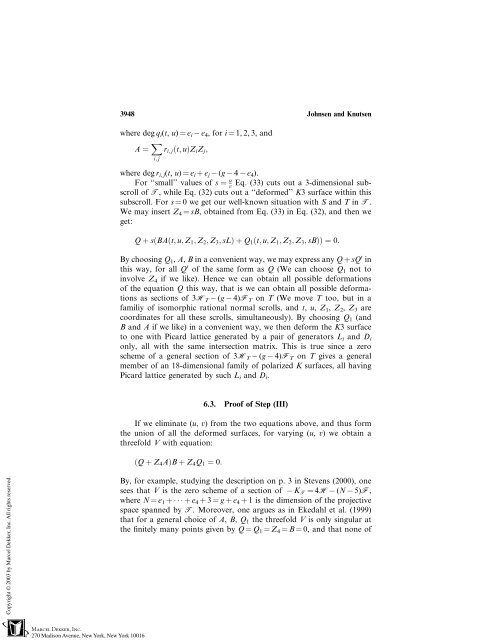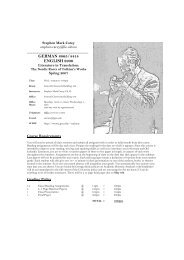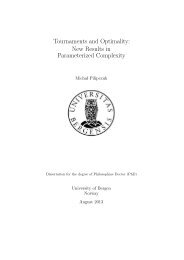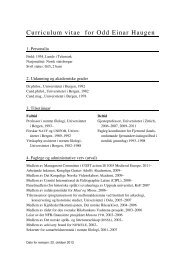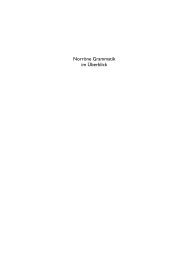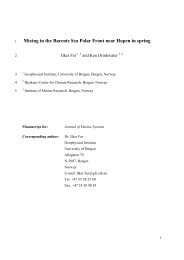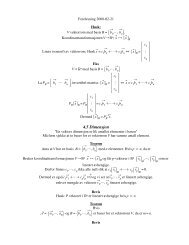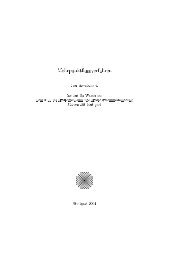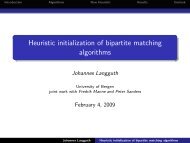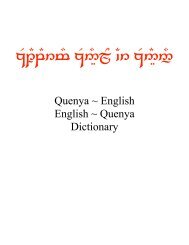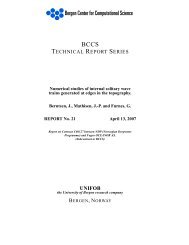Rational Curves in Calabi-Yau Threefolds
Rational Curves in Calabi-Yau Threefolds
Rational Curves in Calabi-Yau Threefolds
Create successful ePaper yourself
Turn your PDF publications into a flip-book with our unique Google optimized e-Paper software.
3948 Johnsen and Knutsen<br />
where deg qi(t, u) ¼ ei e4, for i ¼ 1, 2, 3, and<br />
A ¼ X<br />
ri; jðt; uÞZiZj;<br />
i; j<br />
where deg ri, j(t, u) ¼ ei þ ej (g 4 e4).<br />
For ‘‘small’’ values of s ¼ u v Eq. (33) cuts out a 3-dimensional subscroll<br />
of T, while Eq. (32) cuts out a ‘‘deformed’’ K3 surface with<strong>in</strong> this<br />
subscroll. For s ¼ 0 we get our well-known situation with S and T <strong>in</strong> T.<br />
We may <strong>in</strong>sert Z4 ¼ sB, obta<strong>in</strong>ed from Eq. (33) <strong>in</strong> Eq. (32), and then we<br />
get:<br />
Q þ sðBAðt; u; Z1; Z2; Z3; sLÞþQ1ðt; u; Z1; Z2; Z3; sBÞÞ ¼ 0:<br />
By choos<strong>in</strong>g Q 1, A, B <strong>in</strong> a convenient way, we may express any Q þ sQ 0 <strong>in</strong><br />
this way, for all Q 0 of the same form as Q (We can choose Q1 not to<br />
<strong>in</strong>volve Z4 if we like). Hence we can obta<strong>in</strong> all possible deformations<br />
of the equation Q this way, that is we can obta<strong>in</strong> all possible deformations<br />
as sections of 3HT (g 4)FT on T (We move T too, but <strong>in</strong> a<br />
familiy of isomorphic rational normal scrolls, and t, u, Z1, Z2, Z3 are<br />
coord<strong>in</strong>ates for all these scrolls, simultaneously). By choos<strong>in</strong>g Q1 (and<br />
B and A if we like) <strong>in</strong> a convenient way, we then deform the K3 surface<br />
to one with Picard lattice generated by a pair of generators L i and D i<br />
only, all with the same <strong>in</strong>tersection matrix. This is true s<strong>in</strong>ce a zero<br />
scheme of a general section of 3HT (g 4)FT on T gives a general<br />
member of an 18-dimensional family of polarized K surfaces, all hav<strong>in</strong>g<br />
Picard lattice generated by such Li and Di.<br />
6.3. Proof of Step (III)<br />
If we elim<strong>in</strong>ate (u, v) from the two equations above, and thus form<br />
the union of all the deformed surfaces, for vary<strong>in</strong>g (u, v) we obta<strong>in</strong> a<br />
threefold V with equation:<br />
ðQ þ Z4AÞB þ Z4Q1 ¼ 0:<br />
By, for example, study<strong>in</strong>g the description on p. 3 <strong>in</strong> Stevens (2000), one<br />
sees that V is the zero scheme of a section of KT ¼ 4H (N 5)F,<br />
where N ¼ e1 þ þe4 þ 3 ¼ g þ e4 þ 1 is the dimension of the projective<br />
space spanned by T. Moreover, one argues as <strong>in</strong> Ekedahl et al. (1999)<br />
that for a general choice of A, B, Q1 the threefold V is only s<strong>in</strong>gular at<br />
the f<strong>in</strong>itely many po<strong>in</strong>ts given by Q ¼ Q 1 ¼ Z 4 ¼ B ¼ 0, and that none of


